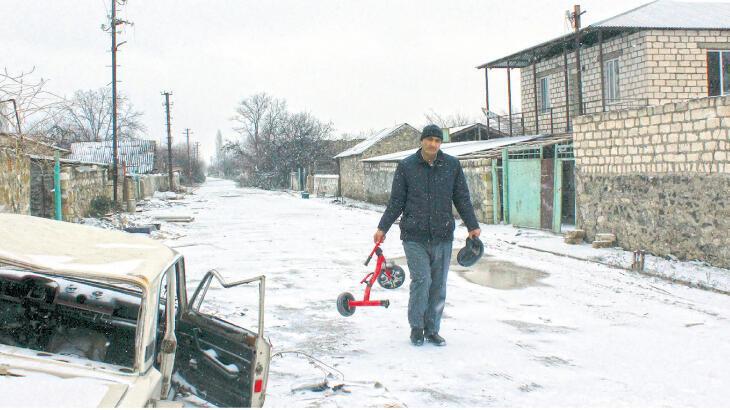
Traces of the bloody war are gradually being erased in Azerbaijan’s city of Terter, which was under heavy bombardment for days during the Nagorno-Karabakh war.
Visiting the settlements liberated from the Armenian occupation in Karabakh, daily Milliyet reporter Ecem Toplar examined the normalization efforts initiated in the region after the war, which lasted for 44 days.
Terter, once a rich and most prosperous region of Karabakh, fell into complete ruin after the invasion of Armenia.
Before the occupation, the main sectors of livelihood of its inhabitants included agriculture, livestock, and fisheries, and there were even wine production facilities in the region where grapes were grown.
However, Armenia had closed the gates of the Qızqovuşan Dam, which was the only water and energy source of the region, in the city of Suqovuşan and had stopped allowing water flow to the Terter Plain, which it had occupied since 1991.
After Suqovuşan was liberated from the Azerbaijani army on Oct. 3, 2020, the Terter River, which had been without water for nearly 30 years, started to flow once again, giving life to the region.
Mining search, scanning, and clearing works have also been started in the region after the liberation of the town.
After the cleaning efforts that will take around two and half years, the region will be opened for resettlement.
Terter, which was declared a “military zone” until May 2021, will also gain a “civilian” status after Azerbaijan’s President Ilham Aliyev’s expedition to the region.
Turkey will also contribute to the resettlement efforts of the region.
Solar energy panels, electricity, and wind power plants will be installed within the scope of a smart city project.
Hospitals, schools, and hotels will be built in addition to the renovation of a ruined main road.
Relations between the former Soviet republics of Armenia and Azerbaijan have been tense since 1991, when the Armenian military occupied Nagorno-Karabakh, internationally recognized as Azerbaijani territory, including seven adjacent regions.
When new clashes erupted on Sept. 27, 2020, the Armenian army launched attacks on civilians and Azerbaijani forces and violated several humanitarian ceasefire agreements.
During the 44-day conflict, Azerbaijan liberated several cities and around 300 settlements and villages from the nearly three-decade-long occupation.
Ankara supported Baku throughout the battle, which ended on Nov. 10 with a Moscow-brokered ceasefire.